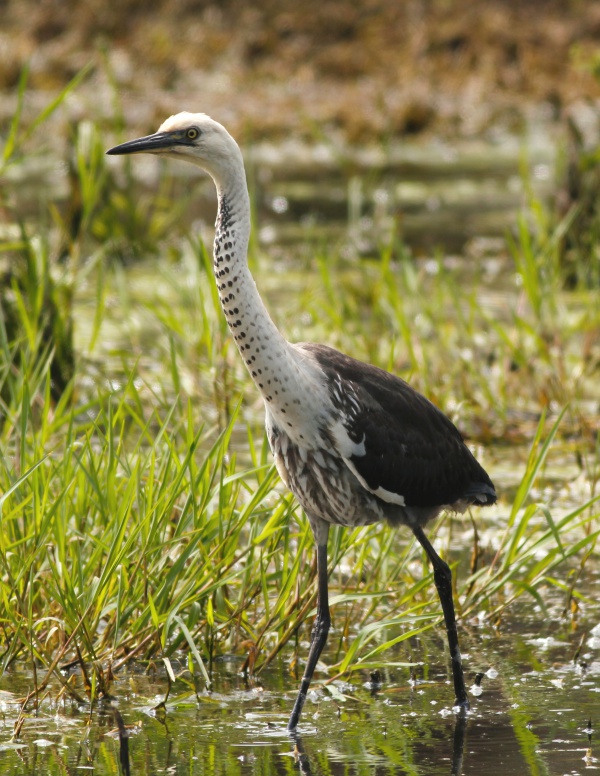Facts About White-necked heron
The white-necked heron, also known as the Pacific heron, is a striking bird primarily found in Australia, with populations also in parts of Indonesia, New Guinea, and New Zealand. These birds are known for their nomadic lifestyle, often moving between water sources, especially during times of flooding or heavy rain when food is plentiful. Under favorable environmental conditions, their populations can significantly increase.
Description
The white-necked heron is a large water bird characterized by its slate-grey to black plumage, adorned with distinctive black spots on its lower fore-neck and throat. During the breeding season, they develop elegant plum-colored nuptial plumes. Their long neck and beak are perfectly adapted for catching fish, frogs, spiders, and other prey. They have green eyes, with black legs and feet. Juveniles, however, have different coloration compared to adults.
Distribution
These herons are commonly seen in wetlands, tidal areas, and shallow freshwater bodies throughout most of Australia. They also inhabit man-made water sources like dams and irrigation systems. However, they are notably absent from arid and desert regions. Their movements are not fully understood due to their unpredictable, irruptive behavior.
Ecology and Habitat
White-necked herons are typically shy and wary, preferring to forage alone or in pairs in shallow wetlands. They are territorial and often aggressively defend their feeding areas, sometimes harassing other birds for food. They can adapt well to altered landscapes, such as farm dams and flooded pastures. During breeding, pairs take turns shading their young with their wings to keep them cool.
Reproduction
The breeding season usually spans from September to December. They construct loose nests from twigs and sticks on trees near water sources. Males engage in courtship displays, and it is believed that they form monogamous bonds with females. A typical clutch consists of four eggs, which are incubated for about 30 days. Both parents share the responsibility of incubating the eggs.
Diet
The white-necked heron's diet is diverse, encompassing freshwater organisms like mussels, fish, shrimp, insects, amphibians, and small vertebrates. They regurgitate food to feed their young and can sometimes display aggressive behaviors towards nest-mates during feeding.
